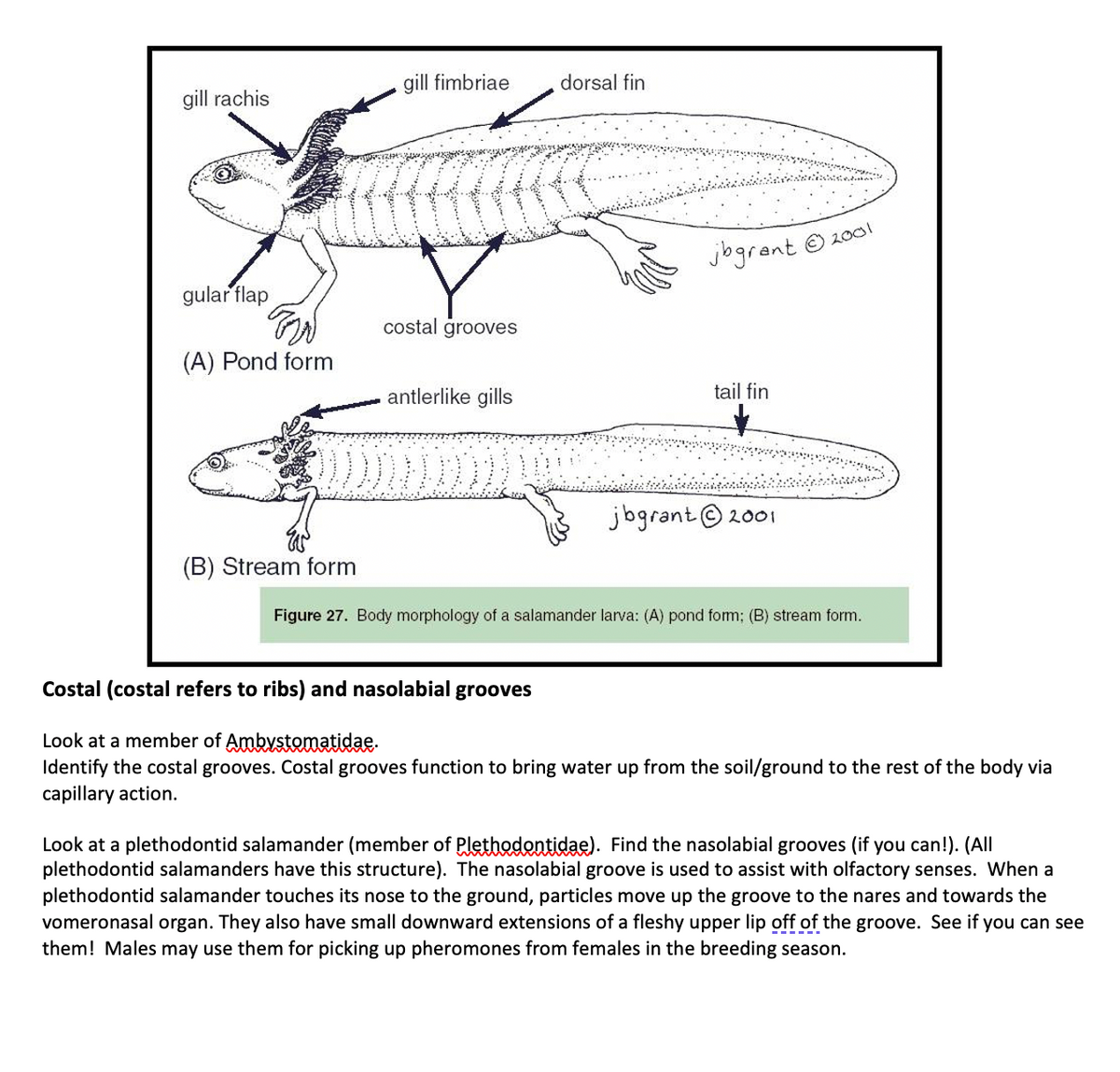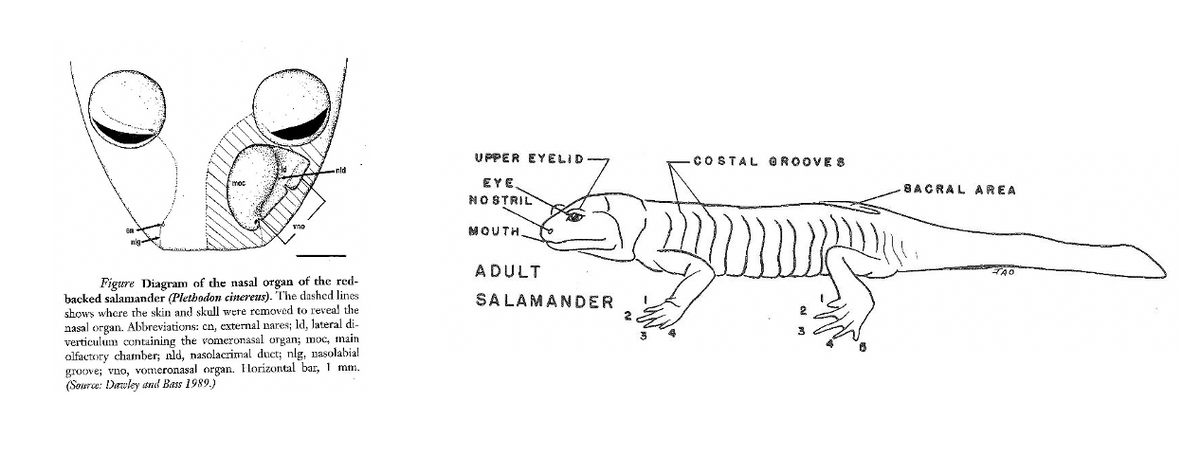Anatomy & Physiology
1st Edition
ISBN:9781938168130
Author:Kelly A. Young, James A. Wise, Peter DeSaix, Dean H. Kruse, Brandon Poe, Eddie Johnson, Jody E. Johnson, Oksana Korol, J. Gordon Betts, Mark Womble
Publisher:Kelly A. Young, James A. Wise, Peter DeSaix, Dean H. Kruse, Brandon Poe, Eddie Johnson, Jody E. Johnson, Oksana Korol, J. Gordon Betts, Mark Womble
Chapter16: The Neurological Exam
Section: Chapter Questions
Problem 5ILQ: Watch this short video (http://openstaxcollege.org/l/facialnerve) to see an examination of the...
Related questions
Question
Q27: Please type the answer this question
Depending on what environment a larval salamander lives in, it may have different structural features in the body.
Question: Based on the following diagrams, why might these differences be adaptive in the pond or stream?

Transcribed Image Text:gill fimbriae
dorsal fin
gill rachis
© 2001
jogrant
gular flap
costal grooves
(A) Pond form
antlerlike gills
tail fin
jbgrant© 2001
(B) Stream form
Figure 27. Body morphology of a salamander larva: (A) pond fom; (B) stream form.
Costal (costal refers to ribs) and nasolabial grooves
Look at a member of Ambystomatidae.
Identify the costal grooves. Costal grooves function to bring water up from the soil/ground to the rest of the body via
capillary action.
Look at a plethodontid salamander (member of Plethodontidae). Find the nasolabial grooves (if you can!). (All
plethodontid salamanders have this structure). The nasolabial groove is used to assist with olfactory senses. When a
plethodontid salamander touches its nose to the ground, particles move up the groove to the nares and towards the
vomeronasal organ. They also have small downward extensions of a fleshy upper lip off of the groove. See if you can see
them! Males may use them for picking up pheromones from females in the breeding season.

Transcribed Image Text:U PPER EYELID
COSTAL OROOVE
EYE.
SACRAL AREA
NOSTRIL
MOUTH.
ADULT
TAO
Figure Diagram of the nasal organ of the red-
backed salamander (Plethodon cinerens). The dashed lines
shows where the skin and skull were romoved to reveal the
SA LAMANDER
2
nasal organ. Abbreviations: en, external nares; Id, lateral di-
verticulum containing the vomeronasal organ; moc, main
olfactory chamber; nld, nasolacrimal duct; nlg, nasolabial
groove; vno, vomeronasal organ. Ilorizontal bar, 1 mm.
(Soure: Dawley tnd Bass 1989.)
Expert Solution
Step 1
Salamanders are known as Caudata, a term alluding to their tails. The greater majority of this species are appropriated in the Western Hemisphere. Lungless species (Plethodontidae) are totally limited to North America and the Neotropics.
Trending now
This is a popular solution!
Step by step
Solved in 2 steps

Knowledge Booster
Learn more about
Need a deep-dive on the concept behind this application? Look no further. Learn more about this topic, biology and related others by exploring similar questions and additional content below.Recommended textbooks for you

Anatomy & Physiology
Biology
ISBN:
9781938168130
Author:
Kelly A. Young, James A. Wise, Peter DeSaix, Dean H. Kruse, Brandon Poe, Eddie Johnson, Jody E. Johnson, Oksana Korol, J. Gordon Betts, Mark Womble
Publisher:
OpenStax College



Anatomy & Physiology
Biology
ISBN:
9781938168130
Author:
Kelly A. Young, James A. Wise, Peter DeSaix, Dean H. Kruse, Brandon Poe, Eddie Johnson, Jody E. Johnson, Oksana Korol, J. Gordon Betts, Mark Womble
Publisher:
OpenStax College




Biology: The Unity and Diversity of Life (MindTap…
Biology
ISBN:
9781337408332
Author:
Cecie Starr, Ralph Taggart, Christine Evers, Lisa Starr
Publisher:
Cengage Learning
